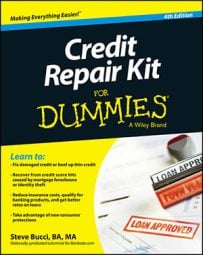Access to Chapter 7, the most popular form of personal bankruptcy in recent years, is restricted by the Bankruptcy Abuse Prevention and Consumer Protection Act of 2005. Chapter 7 has been so popular because of its ability to get rid of debts and collectors. Under a Chapter 7, you receive relief from virtually all your debts and you get it fast — like the same day (unlike Chapter 13).
Passing the means test
The first hurdle in with Chapter 7 bankruptcy is meeting the means test. If you have too many means, you can’t declare Chapter 7. The courts won’t take your word for it; you have to prove that your income really is what you say it is. If your income over the last six months is above the applicable median for your state of residence, you can’t file for Chapter 7.
To find out whether your income is above the median in your state of residence, go to the U.S. Census website. Check out this good means-test calculator.
If your income is above the median, don’t give up just yet. Next, you want to determine whether you have excess monthly income of more than $166.66 to pay $10,000 of debt over five years. So what counts as excess income? To find out, you have to use the spending guidelines approved by the IRS. The IRS guidelines may be very tight for you.
Using the IRS allowable expenses as a guide, if you can squeak the $166.66 a month out of your budget, the best you can do is to file under Chapter 13.
If you have less excess monthly income than the magic number of $166.66 after IRS expense allowances, you may proceed: Do you have an extra $100 a month over the next 60 months? And will that $6,000 account for at least 25 percent of your debt? If the answer to both questions is no, you can pass go and file for Chapter 7. If not, go directly to Chapter 13.
Tithing — giving money to your church — is allowed in both Chapter 7 and Chapter 13 bankruptcies. You may donate up to 15 percent of your gross income and have it count as an expense that may lower your income. Donating to your church may just help you make the numbers work to become eligible for a Chapter 7 rather than a Chapter 13.
Receiving required counseling
At some point during the six months before you file for bankruptcy, you have to receive counseling and get a certificate from a court-approved nonprofit credit counselor.
The Office of the U.S. Trustee lists approved agencies. Click the Consumer Information tab and then click “Credit Counseling & Debtor Education.”
Credit counseling costs are on a sliding fee scale. They are free if your income is below 150 percent of the poverty level for your family size. Otherwise, up to $50 is considered reasonable.
Just because the court has approved the counseling agency doesn’t make it the right one for you, so exercise caution when selecting. You want someone who has a good track record and has electronic-certificate-issuing capability. Why? Because if the counselor makes a mistake or the certificate is delayed in getting to you, you could face costly delays in getting this matter successfully concluded.

